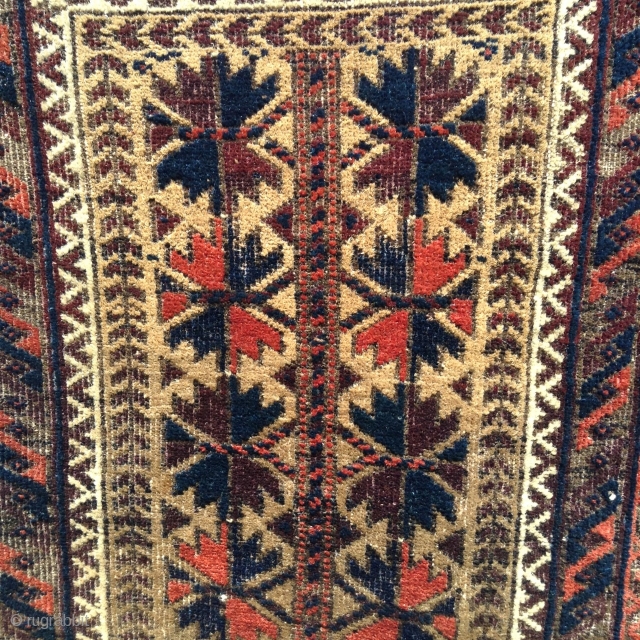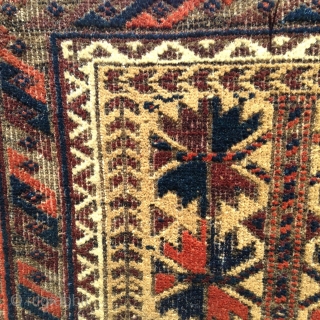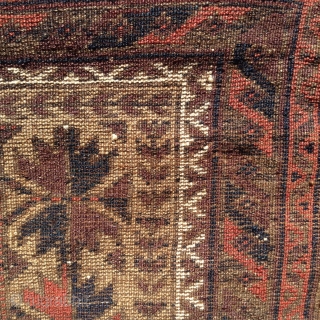Back
Here is an older Baluch balisht in a classic tree of life design. Balisht were woven as a dowry pillow (usually in pairs) for personal use only thus they were not made early on as a commercial item. i suggest that this piece is older (2nd. to 3rd. quarter of the 19th. century) based on several subtle details of the weaving. First is the diminutive size of only 19" x 27", often older tribal tent weaving's are of smaller size for use in a smaller space. Second is the beautiful drawing of a very classic balisht design - the size and spacing of the leaved as well as the actual drawing of the tree itself, variations in the branches as well as the details in the trunk show that the weaver really understood the picture she was weaving. Finally is the wonderful patina and very soft blanket like handle of the piece that make it a piece that is easy to overlook due to it's classic, simple design. i should also mention the rich, deep, all natural colors. note - For her knowledge of design look at the clear ashik design formed in the camel background when you look at the trunk of the tree, in between each set of branches - formed by the positive spacing of the leaves. Half ashiks are formed in the camel background at the side borders as well. The tribal art in this little balisht is so simple and yet so strong
NOTE - For her knowledge of design look at the clear ashik design formed
in the camel background when you look at the trunk of the tree,
in between each set of branches - formed by the positive spacing
of the leaves. Half ashiks are formed in the camel background at
the side borders as well. The tribal art in this little balisht
is so simple and yet so strong.
price:
SOLD Thank You
- Home
- Antique Rugs by Region
- Category
- Profiles
- Post Items Free
- Albums
- Benaki Museum of Islamic Art
- Budapest: Ottoman Carpets
- Gulbenkian Museum
- Islamic Carpets. Brooklyn
- Islamic Textiles. Brooklyn
- Konya Museum: Rugs
- MKG, Hamburg
- MMA: Caucasian Carpets
- MMA: Mamluk Carpets
- MMA: Mughal Indian Carpets
- MMA: Ottoman Carpets
- MMA: Safavid Persian Carpets
- MMA: Turkmen Rugs
- McCoy Jones Kilims
- Ottoman textiles. Met
- Philadelphia Museum
- Rugs and Carpets: Berlin
- Seljuqs at the Met
- TIEM, Istanbul: Carpets
- V&A: Classical Carpets
- Vakiflar Carpets: Istanbul
- Baluch Rugs: Indianapolis
- Gallery Exhibitions
- Jaf an Exhibition
- Alberto Levi Gallery
- Andean Textile
- Christie's London: 2016
- Francesca Galloway
- HALI at 40
- ICOC Washington, DC 2018
- Jajims of the Shahsavan
- London Islamic Week April, 2018
- Mongolian Felts
- Navajo Rugs: JB Moore
- Persian Piled Weavings
- SF Tribal & Textile Art Show 2020
- SF Tribal 2019
- Sotheby's: C. Alexander
- Turkish Prayer Rugs
- Turkmen Main Carpets ICOC 2007












